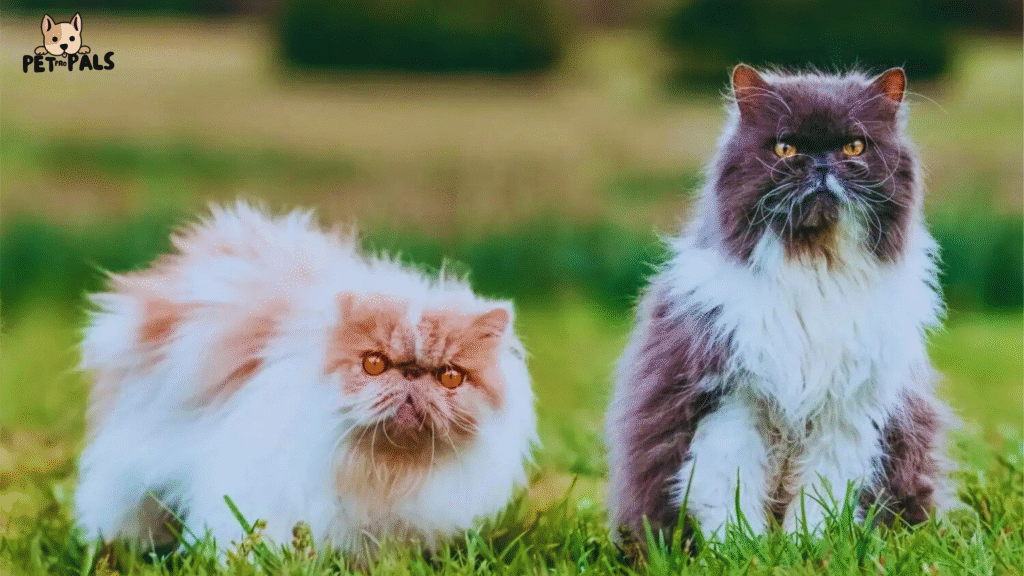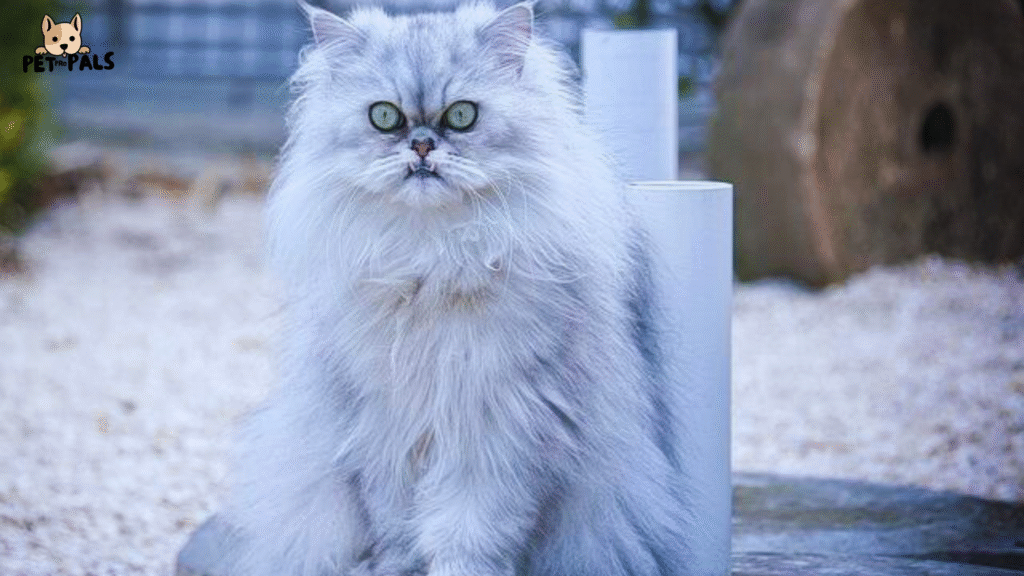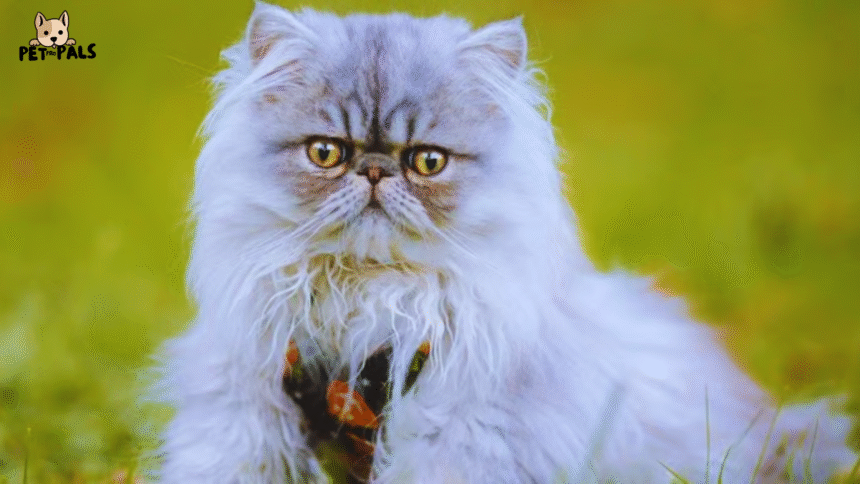Bringing a new pet into your life is a big decision, and if you’re considering a Persian cat, you’re not alone. Known for their long, silky coats and calm, affectionate nature, Persian cats have been a favorite among cat lovers for generations.
But while they’re beautiful and gentle, Persian cats also come with specific needs. From their grooming routine to their health and lifestyle preferences, there’s a lot to know before making one a part of your family.
Today, we’ll walk you through everything you need to know about Persian cats, including their personality, lifespan, care requirements, and what it costs to own one. Whether you’re a first-time cat owner or looking to add another feline friend to your home, understanding the Persian Cat breed can help you make the right choice.
Let’s dive in and find out if a Persian cat is the perfect match for you.
History and Origins of the Persian Cat

The Persian cat’s story begins in ancient Persia, what we know today as modern-day Iran. These elegant, long-haired cats were treasured for their luxurious coats and calm demeanor, and they were often seen as symbols of royalty and refinement. Though the exact origin remains somewhat mysterious, historical records suggest that Persian cats were being kept as prized pets as early as the 1600s.
Their journey into Europe began when Italian and French explorers brought them back from the Middle East. European nobility quickly became enamored with their exotic appearance and graceful temperament, and the Persian cat gained popularity as a luxury pet across the continent. Queen Victoria of England was one of the breed’s most famous admirers, further boosting its status in high society.
By the late 1800s and early 1900s, Persian cats made their way to America, where they were quickly embraced. Over time, breeders refined the Persian’s look, emphasizing its round face, short nose, and dense, flowing coat. These changes led to the modern Persian cat we recognize today.
The breed has been officially recognized by major cat registries such as the Cat Fanciers’ Association (CFA) and The International Cat Association (TICA), and remains one of the most popular pedigreed cat breeds worldwide.
Persian Cat Breed Information
Persian cats are a long-haired, purebred cat breed known for their calm personalities and luxurious appearance. They fall under the “longhair” group in most breed registries and are often regarded as one of the most classic and recognizable cat breeds worldwide. Bred primarily as indoor companions, Persians are not known for being active climbers or explorers; they prefer cozy spots and a peaceful environment.
Appearance and Physical Features
Persians have a distinctively round face, with a short, flat nose (especially in the “Peke-faced” or show-type variety), large, round eyes, and small ears set wide apart. Short, strong legs support their sturdy, medium-to-large bodies, and their tails are bushy and proportional to their frame. Overall, they give off a look of elegance and softness, traits that match their gentle nature.
Coat Types and Color Variations
One of the Persian cat’s most defining features is its thick, flowing double coat. This coat requires regular grooming to prevent tangles and matting. Persian cats come in a wide range of coat colors and patterns, with over 100 combinations recognized. Some of the most popular include:
- Solid colors (like white, black, blue, cream)
- Bi-color and tri-color (calico)
- Tabby, shaded, and smoke patterns
- Himalayan (pointed) – a variety with Siamese-like color points
Each coat variation brings out a unique charm, making Persian cats not only beautiful but also diverse in appearance.
Personality and Temperament
Persian cats are known for being calm, affectionate, and quiet. They’re not typically vocal or overly energetic; instead, they enjoy lounging, cuddling, and simply being near their humans. While they can be playful in short bursts, Persians prefer relaxed environments and may become stressed in chaotic or noisy households.
They’re generally gentle with children and friendly toward other pets if introduced slowly. However, they tend to bond closely with their favorite people and may appear aloof to strangers. Ideal for owners who appreciate a low-key, loving companion, Persian cats are often described as “lap cats” through and through.
The Ancestry: Long-Haired Cats
Long-haired cats are believed to have originated in the mountainous regions of the Middle East, particularly around modern-day Iran, Turkey, and Afghanistan. The cooler climate in these areas likely contributed to the development of their thick, insulating coats, a natural adaptation that gave early long-haired cats a survival advantage in colder environments. These cats eventually caught the attention of travelers and traders, who brought them to Europe during the 1600s.
Selective Breeding for Aesthetics
Once introduced to Europe, long-haired cats quickly became symbols of elegance and luxury. Breeders began selectively mating these cats for their most desirable features,long, silky coats, calm demeanors, and round faces. Over generations, this process enhanced their beauty but also led to distinct physical traits, such as the flat-faced (brachycephalic) look seen in modern show Persians. The goal was to refine their appearance while preserving their gentle temperament.
How the Persian Fits into Feline Lineage
Persian cats are considered one of the oldest and most influential long-haired breeds in feline history. They served as the foundation for many other breeds, including the Himalayan, Exotic Shorthair, and Chinchilla Persian. With a lineage that stretches back centuries, the Persian stands as a key figure in the evolution of domestic long-haired cats. Their strong genetic identity and widespread popularity have helped shape the modern standards of feline beauty and breed development around the world.
Show vs. Doll-Faced Persian Differences

Today’s Persian cats come in two main types: show Persians and doll-faced Persians. The show-type Persian, also known as the “flat-faced” or “peke-faced” Persian,is the version most commonly seen in cat shows. It features an extremely short, flat nose, a high forehead, and a round, compact face, giving it a striking, almost toy-like appearance.
The doll-faced Persian retains a more traditional look, with a slightly longer nose and less exaggerated features. This variety is often preferred by pet owners who want the elegance of a Persian without the health concerns sometimes associated with brachycephalic (flat-faced) breeds, such as breathing issues or tear duct problems.
Breeding Standards and Variations
Reputable breeders follow strict guidelines set by organizations like the Cat Fanciers’ Association (CFA) and The International Cat Association (TICA). These standards define everything from head shape and eye color to coat texture and body structure. While the show standard emphasizes the extreme flat face and plush coat, many breeders now also focus on health and genetic diversity to avoid inherited conditions.
There are also specific variations within the Persian breed, including:
- Himalayan Persians – Known for their color-point coats and blue eyes
- Chinchilla Persians – Lighter, silvery coats with green eyes
- Teacup Persians – A controversial, miniature version bred for small size
These variations allow for more choice, but they also come with different care needs and potential health considerations.
Popularity in Pop Culture and Media
The Persian cat has enjoyed a long-standing spot in pop culture, often portrayed as a symbol of elegance,or sometimes, villainous luxury. From the fluffy white cat in James Bond’s Blofeld’s lap to Mr. Tinkles in Cats & Dogs, Persian cats are often cast as sophisticated, spoiled, or mysterious.
They’ve also been featured in fashion ads, internet memes, and even music videos, reinforcing their reputation as the “divas” of the cat world. Their distinctive look and calm personality make them one of the most photographed and recognizable cat breeds on the planet.
The Persian Cat Lifespan
Persian cats typically live between 12 to 17 years, with many reaching their late teens when properly cared for. Like all breeds, lifespan can vary based on genetics, diet, lifestyle, and medical attention. Indoor Persians, in particular, tend to live longer than those exposed to outdoor risks.
Factors Influencing Longevity
Several factors play a role in how long a Persian cat lives:
- Genetics: Breeding practices impact overall health. Cats from reputable breeders are more likely to have fewer hereditary issues.
- Diet: A balanced, high-quality diet supports immune function and prevents obesity, which can shorten lifespan.
- Grooming & Hygiene: Regular grooming prevents matting and skin infections, while keeping tear stains and eye discharge in check.
- Vet Care: Routine checkups, dental cleanings, and early treatment of issues like kidney disease or respiratory problems are crucial.
- Living Environment: Indoor cats face fewer threats from accidents, parasites, and diseases, contributing to a longer, healthier life.
Tips to Help Them Live Longer, Healthier Lives
Want your Persian to thrive well into their senior years? Here’s how:
- Brush daily to prevent painful tangles and keep their coat healthy.
- Clean eyes gently to avoid buildup and infections.
- Feed a vet-recommended diet tailored for their age and activity level.
- Encourage light play to prevent weight gain and keep joints mobile.
- Schedule regular vet visits, even if your cat seems healthy.
- Keep them indoors to protect against environmental dangers and reduce stress.
With the right care and a calm, loving home, your Persian cat can enjoy a long, comfortable life by your side.
Caring for Your Persian Cat
Persian cats have long, thick coats that require daily brushing to prevent tangles and painful mats. Skipping grooming can quickly lead to knots that are difficult to remove and uncomfortable for your cat. Use a wide-toothed comb followed by a fine brush to keep their coat smooth and healthy.
Their flat faces also mean eye discharge is common. Gently wipe around their eyes each day with a soft, damp cloth or vet-approved wipe to prevent staining and infection.
Feeding and Nutrition
A Persian cat’s diet should focus on high-quality protein and balanced nutrients, with formulas tailored to their life stage (kitten, adult, or senior). Because they can be prone to obesity, it’s important to avoid overfeeding and monitor portion sizes. Some cat food brands even offer Persian-specific formulas that support coat health and are shaped for their flat faces to make eating easier.
Fresh water should always be available, and wet food can be a good addition to help with hydration.
Litter Box Hygiene and Coat Cleanliness
Long hair can easily trap litter, dirt, or even feces, especially if the litter box isn’t clean or large enough. Scoop the box at least once a day, and consider a low-dust, non-stick litter to reduce mess. Regularly check your cat’s back end and paws for cling-ons, trimming fur in those areas if needed.
Using a covered litter box may help contain litter but be sure it has proper ventilation.
Indoor vs. Outdoor Lifestyle
Persian cats are best kept indoors. Their docile nature and long coats make them vulnerable to outdoor dangers like predators, traffic, parasites, and harsh weather. Plus, their grooming needs increase dramatically if they’re allowed outside.
An indoor lifestyle ensures their safety and helps them live longer, healthier lives. You can still enrich their environment with window perches, cat trees, and interactive toys.
Training Your Persian Cat
Fortunately, Persian cats are generally easy to litter train—especially if they’re started as kittens. Make sure the litter box is clean, easy to access, and placed in a quiet, low-traffic area. If you’re adopting an adult Persian, be patient and consistent with placement and routine.
Positive reinforcement, like treats or gentle praise, can help solidify good habits.
Encouraging Positive Behavior
While Persians are naturally calm, you’ll still want to encourage good behavior, like using scratching posts or playing nicely. Use positive reinforcement (treats, petting, toys) rather than punishment. These cats respond best to gentle encouragement and routine.
Interactive toys or food puzzles can also help stimulate their minds and prevent boredom-related behaviors.
Challenges with Persian Cat Independence
Persians are more laid-back than some breeds, but they can also be independent and sometimes aloof. Don’t expect them to be overly playful or always eager for attention. Instead, they often show affection in quiet ways,like sitting near you or following you from room to room.
While they don’t demand constant interaction, Persians still need love, attention, and consistency to stay emotionally balanced.
Common Health Concerns of Persian Cats
Persian cats are known for their beauty and gentle temperament, but they also have specific health issues, many of which are linked to their flat facial structure and genetics. Being aware of these conditions can help you take early action and provide better care.
Brachycephalic Airway Syndrome
Due to their flat-faced (brachycephalic) appearance, many Persian cats suffer from respiratory issues, such as noisy breathing, snoring, or difficulty tolerating heat and exercise. In severe cases, this can affect their ability to breathe normally and may require surgical correction.
Polycystic Kidney Disease (PKD)
PKD is a common inherited condition in Persian cats, where fluid-filled cysts develop in the kidneys over time. This can eventually lead to kidney failure. Reputable breeders now screen for PKD, so always ask for genetic test results if you’re buying from a breeder. Regular ultrasounds and vet checkups can help monitor kidney health.
Eye and Dental Problems
Because of their facial structure, Persians often have tear overflow (epiphora), which can cause staining and increase the risk of eye infections. Daily eye cleaning is essential.
Their short jaws also make them prone to malocclusion (misaligned teeth) and tartar buildup, so regular dental care, including brushing or dental treats, is strongly recommended.
Preventive Vet Care Tips
- Annual checkups and bloodwork starting by age 5
- Regular dental cleanings and at-home brushing
- Genetic testing for PKD if not already done
- Eye and respiratory monitoring, especially during hot weather
- Vaccinations, deworming, and parasite prevention per vet guidance
Preventive care can significantly extend your Persian cat’s quality and length of life.
Characteristics of Persian Cats
Persian cats are best known for their quiet, laid-back temperament. They’re typically not hyper or vocal, preferring to relax in calm surroundings. Many Persians are extremely affectionate with their owners, often showing love through quiet companionship and gentle cuddles rather than energetic play.
They’re lap cats at heart, enjoying attention but never demanding it.
Ideal Home Environments
Persians thrive in peaceful, stable households. Loud environments or frequent disruptions can stress them out. They’re a great match for:
- Apartment dwellers
- Single-person households
- Families with calm routines
- Seniors looking for a relaxed companion
Their low energy level means they don’t need much room to roam, but they do love a cozy perch or a sunny windowsill.
Compatibility with Children and Other Pets
Persians are generally tolerant and friendly with children, especially when treated gently. They’re not the best match for very active kids, but they do enjoy soft interactions and bonding over quiet moments.
They can also get along well with other pets, including dogs and cats, as long as introductions are handled gradually. Because they’re not territorial or aggressive, Persians adapt well to multi-pet homes, as long as they have a safe space to retreat when needed.
Is the Persian Cat Right for You?
With their luxurious coats, gentle personalities, and regal charm, Persian cats are truly one of a kind. But behind their beauty lies a breed that requires commitment, patience, and consistent care.
If you’re someone who enjoys calm companionship, doesn’t mind daily grooming, and can provide a quiet, loving home, then a Persian cat may be the perfect fit for your lifestyle. They thrive indoors, form close bonds with their humans, and bring a peaceful presence to any household.
To recap:
- Care: Daily brushing, regular vet visits, and close attention to health and hygiene
- Traits: Calm, affectionate, laid-back, and low-energy
- Commitment: Long-term grooming, indoor living, and monitoring for breed-specific health issues
Owning a Persian cat is not just about having a beautiful pet—it’s about forming a lasting relationship with a gentle soul who will quietly fill your home with love.
If you’re ready to embrace the grooming routine and offer the comfort and stability they need, a Persian cat can be a deeply rewarding companion for many years to come.

